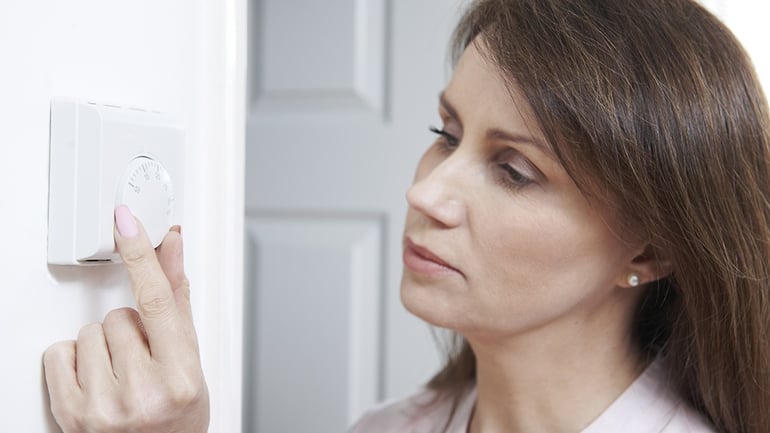
Uneven heating in your home costs hundreds of dollars annually in energy bills. It also affects the comfort level of your family and can lead to sickness.
The biggest sign of uneven heating is if some rooms in your home feel warmer than others. That's an indicator of wasted money on energy bills and potential sick days from work or school.
Most homeowners know that hot air rises, but this scientific fact plays a role in uneven home heating. Significant temperature disparities can lead to excess costs and a shorter lifespan of the HVAC system. This means that your comfort and wallet are negatively affected by your home's inefficiencies.
Here's the solution to uneven home heating:
-
Blocked or closed ventilation. If you notice a particular room won't get warm, this could be a sign of poor air circulation. Locate all the room's air vents. After that, ensure all the vents are opened and clear of furniture.
HVAC System Tip: Don't attempt to manually close off vents to focus heating in one or a couple rooms. This zoned-home heating technique puts unnecessary stress on the home heating system. -
Furnace problems. The furnace plays a huge role in heating your home. While annual furnace maintenance is important, minor changes can also improve uneven home heating.
One example is a dirty furnace filter. A dirty filter restricts the amount of air circulating your home. This could lead to rooms not receiving enough air to properly heat up. Make sure the furnace is properly sized for your home’s heating needs. A furnace that's too big or too small can lead to home heating problems.
For example, a furnace that's too big for your home won't be able to remove humidity because it's constantly turning on and off. A unit that's too small is unable to circulate the necessary air. -
Air stratification. Science sets HVAC up to fail when it comes to heating your home. Since warm air rises, rooms at the top of your home are naturally warmer than your basement.
A few HVAC system tips can reduce the impact of this heating problem. Set the fan to "on" not "auto" to reduce the energy being used to reach a comfortable temperature on the lower floors.
Also, use destratification fans, which are found mounted in rooms with high ceilings. These fans force the rising hot air down to those on the ground level. -
Faulty air ducts. Air ducts are the highways of your home, allowing air to filter room to room. A crack or hole in the air duct can lead to heating problems. This means warm air could be escaping (or leaking) before it reaches its destination. As a result, you notice uneven heating in those rooms.
HVAC System Tip: If you recently had a home renovation, check the ductwork. Sometimes, the duct lines can be disconnected during these projects. -
Insufficient insulation. This is especially concerning in older homes. Without proper insulation, it doesn't matter how great the HVAC system is. Insulation keeps heat from escaping through unnoticed nooks and crannies.
With poor insulation, heat escapes through windows, door frames, the attic, and walls. Colder rooms are the greatest concern because they're likely weak in insulation. It's recommended that insulation is checked annually. If it's been a couple years, consider having an HVAC professional take a look.
If you’re still scrambling for a solution to this heating problem, call Warner Service to look at your unit. You can also download our Energy Bill Checklist to ensure that you have the most energy-efficient HVAC system possible. Click on the button below to get started:


